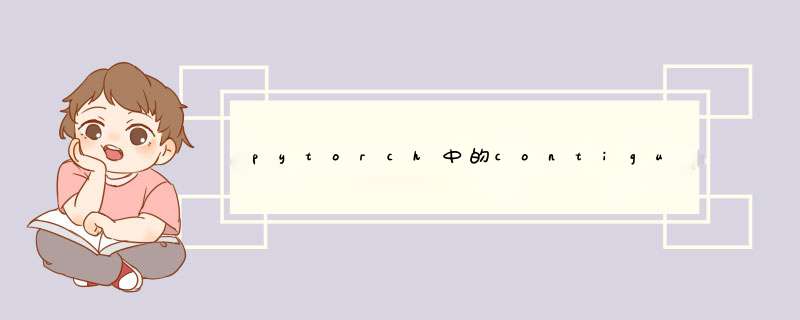
contigous 在英文中为
连续的意思,何为连续,就是语义相同的张量存储在连续的内存空间中,
为什么要使用contigous?
因为view() *** 作需要连续的tensor
transpose、permute *** 作虽然没有修改底层一维数组,但是新建了一份Tensor元信息,并在新的元信息中的 重新指定 stride。torch.view 方法约定了不修改数组本身,只是使用新的形状查看数据。如果我们在 transpose、permute *** 作后执行 view,Pytorch 会抛出以下错误。
x = torch.arange(12).reshape(4,3)
print(x)
print(x.stride())##步长
'''
tensor([[ 0, 1, 2],
[ 3, 4, 5],
[ 6, 7, 8],
[ 9, 10, 11]])
(3, 1)
'''
x1 = x.transpose(0,1)
print(x1)
print(x1.stride())
'''
tensor([[ 0, 3, 6, 9],
[ 1, 4, 7, 10],
[ 2, 5, 8, 11]])
(1, 3)
'''
print(x.data_ptr()== x1.data_ptr())
print(x.is_contiguous(), x1.is_contiguous())
''':cvar
True
True False
'''
# x2 = Tensor.flatten(x)
# print(x2)
#
# x3 = Tensor.flatten(x1)
# print(x3)
x3= x.view(-1)##拉平,观察底层数据
print(x3)
# x4 = x1.view(-1)
# print(x4)##会报错,因为步长的改变。view 仅在底层数组上使用指定的形状进行变形
''':cvar
File "C:/Users/adcar/PycharmProjects/pythonProject2/NLP/transformer/yufa1.py", line 222, in
x4 = x1.view(-1)
RuntimeError: view size is not compatible with input tensor's size and stride
(at least one dimension spans across two contiguous subspaces). Use .reshape(...) instead.
'''
x5 = x1.contiguous().view(-1)##而通过contiguous让其变得连续后就可以使用view
print(x5)
''':cvar
tensor([ 0, 3, 6, 9, 1, 4, 7, 10, 2, 5, 8, 11])
'''
print(x5.data_ptr()== x3.data_ptr())##但是contiguous()创建了一块新的内存,所以他们的地址是不是同的
'''
False
'''
欢迎分享,转载请注明来源:内存溢出

 微信扫一扫
微信扫一扫
 支付宝扫一扫
支付宝扫一扫
评论列表(0条)